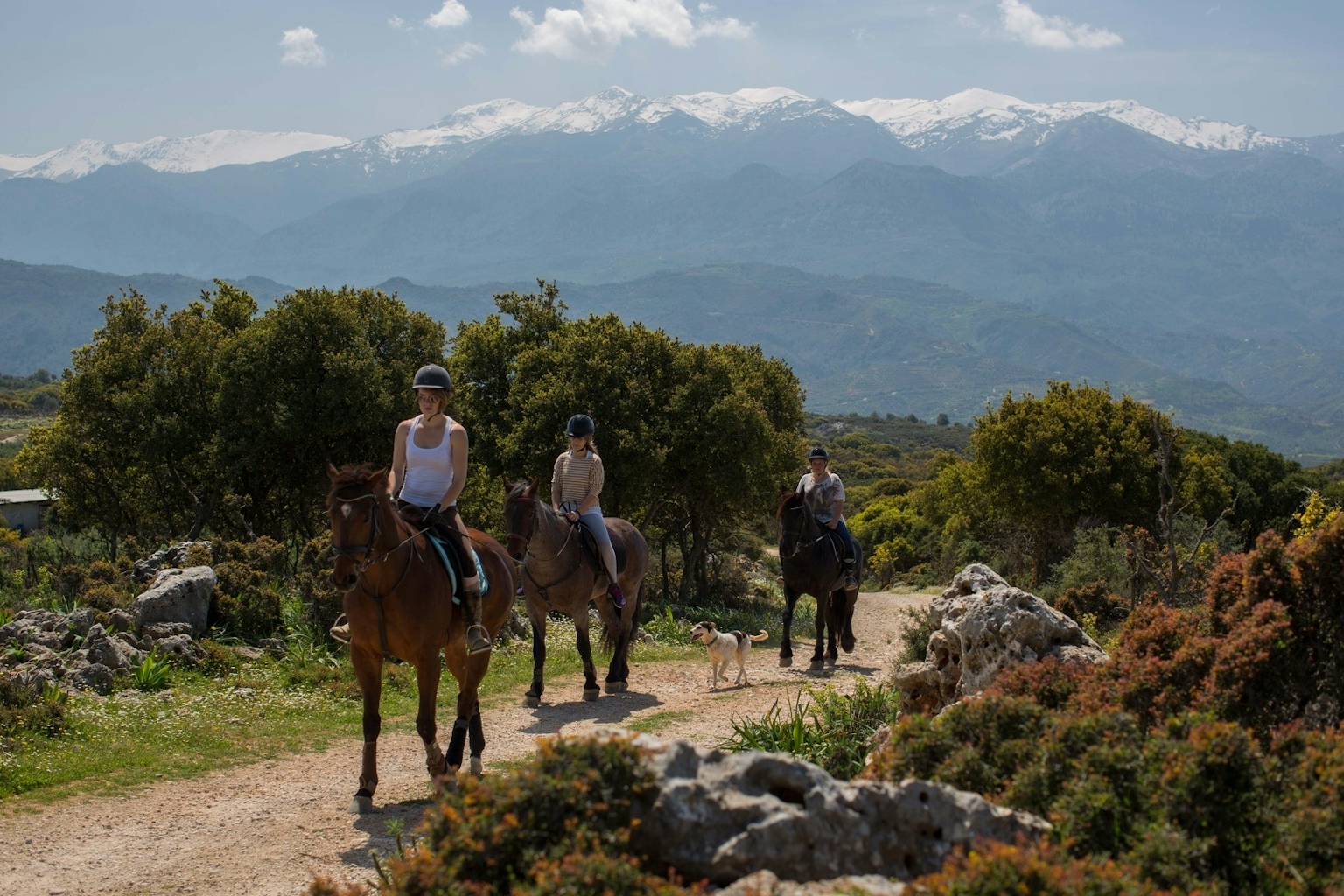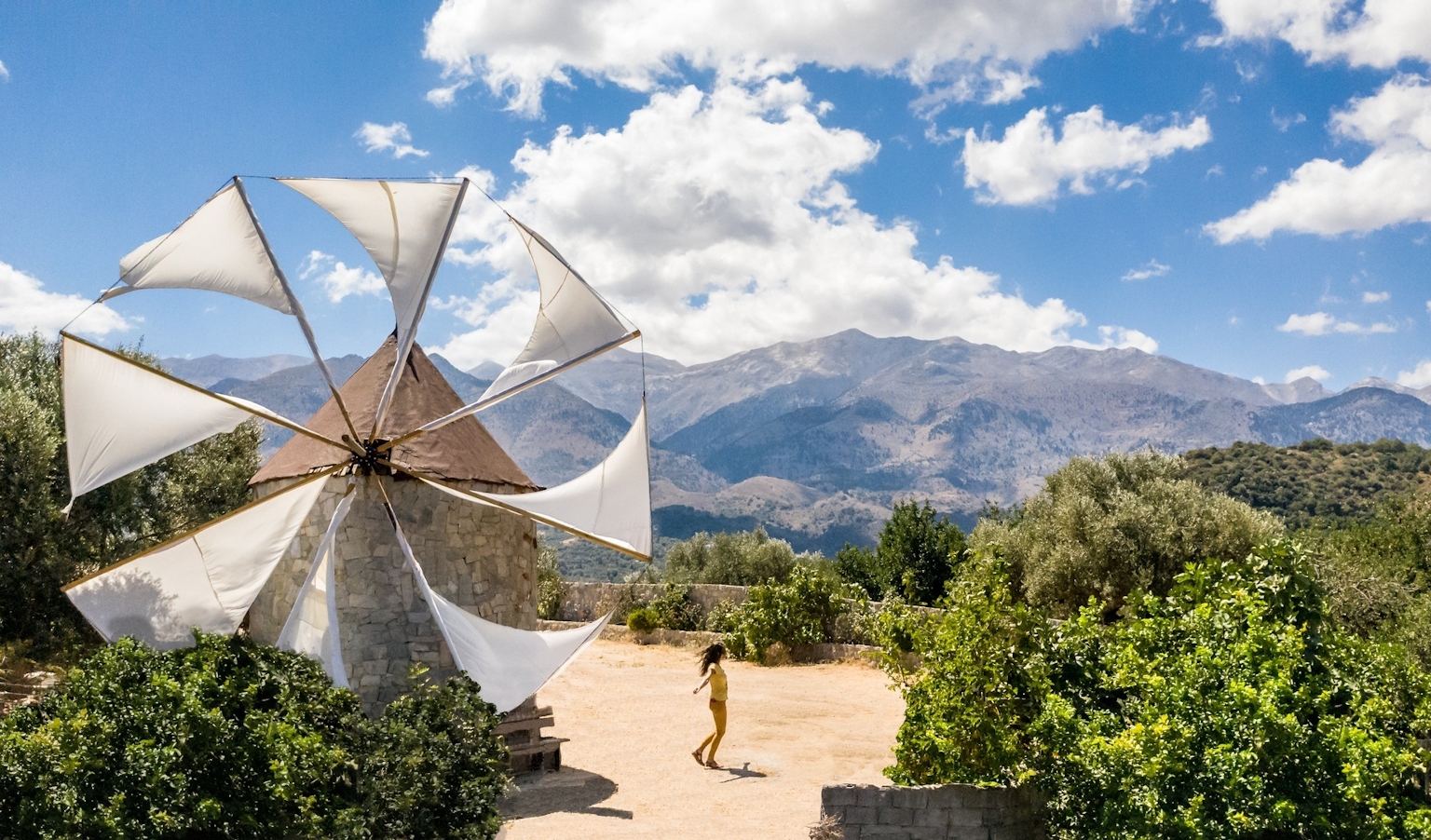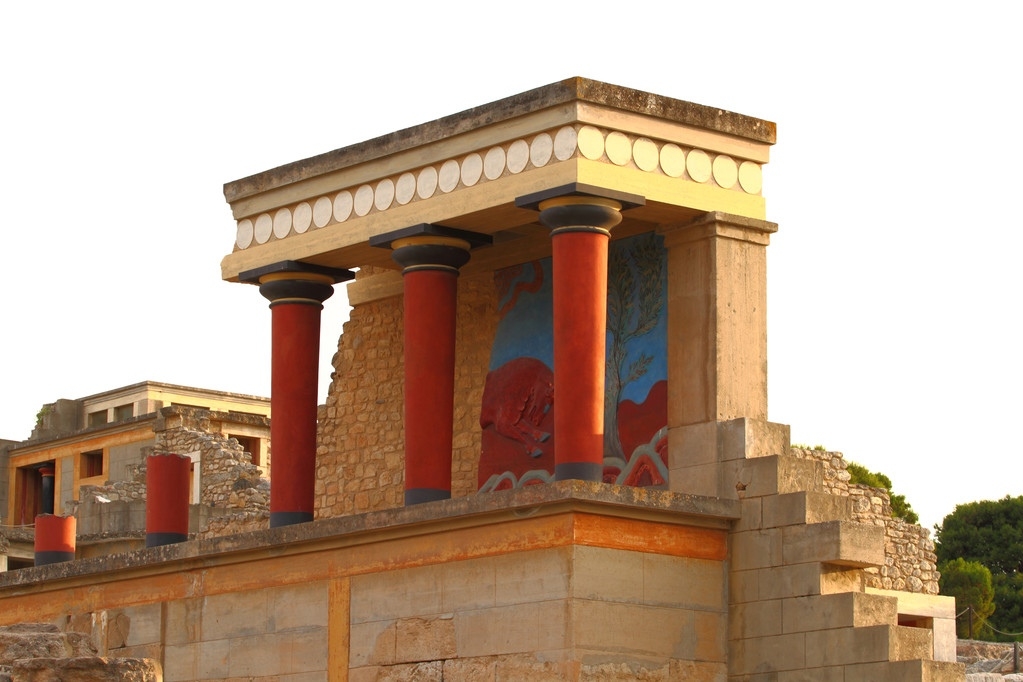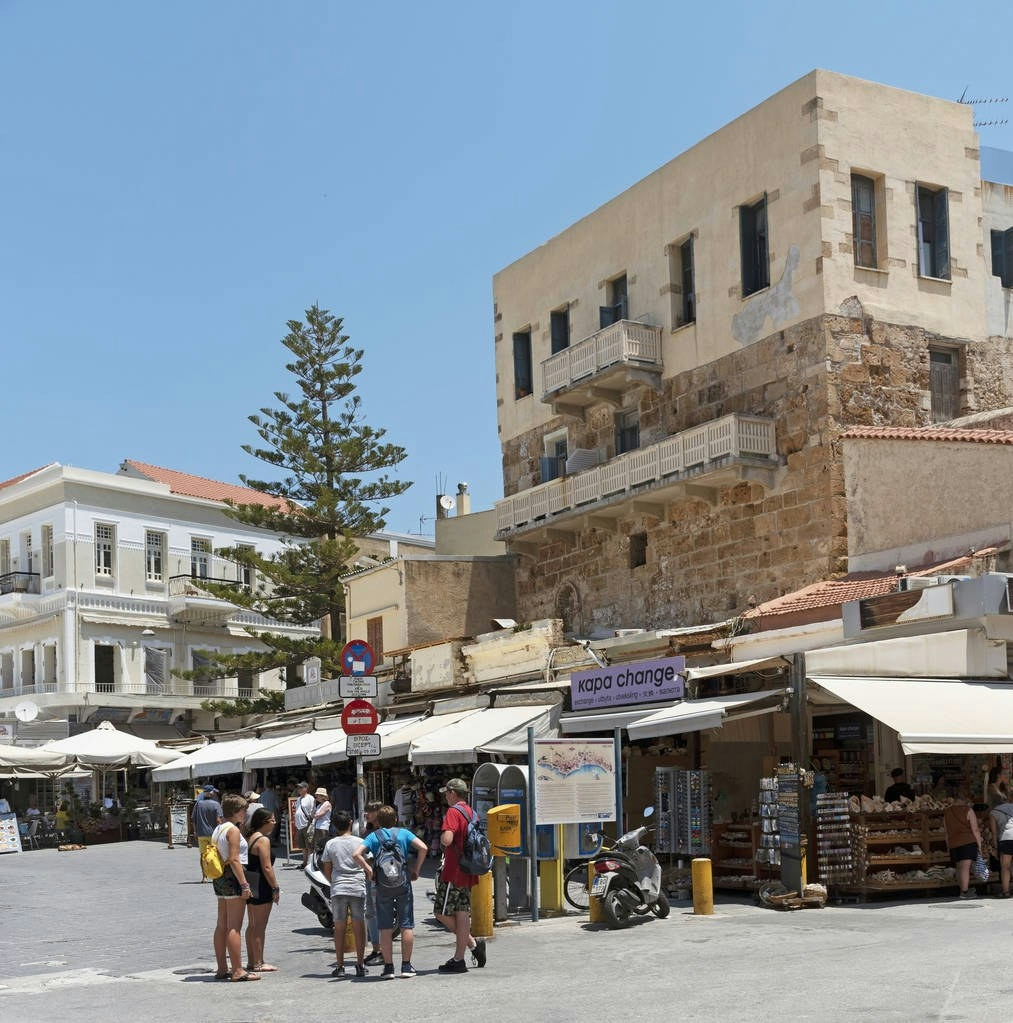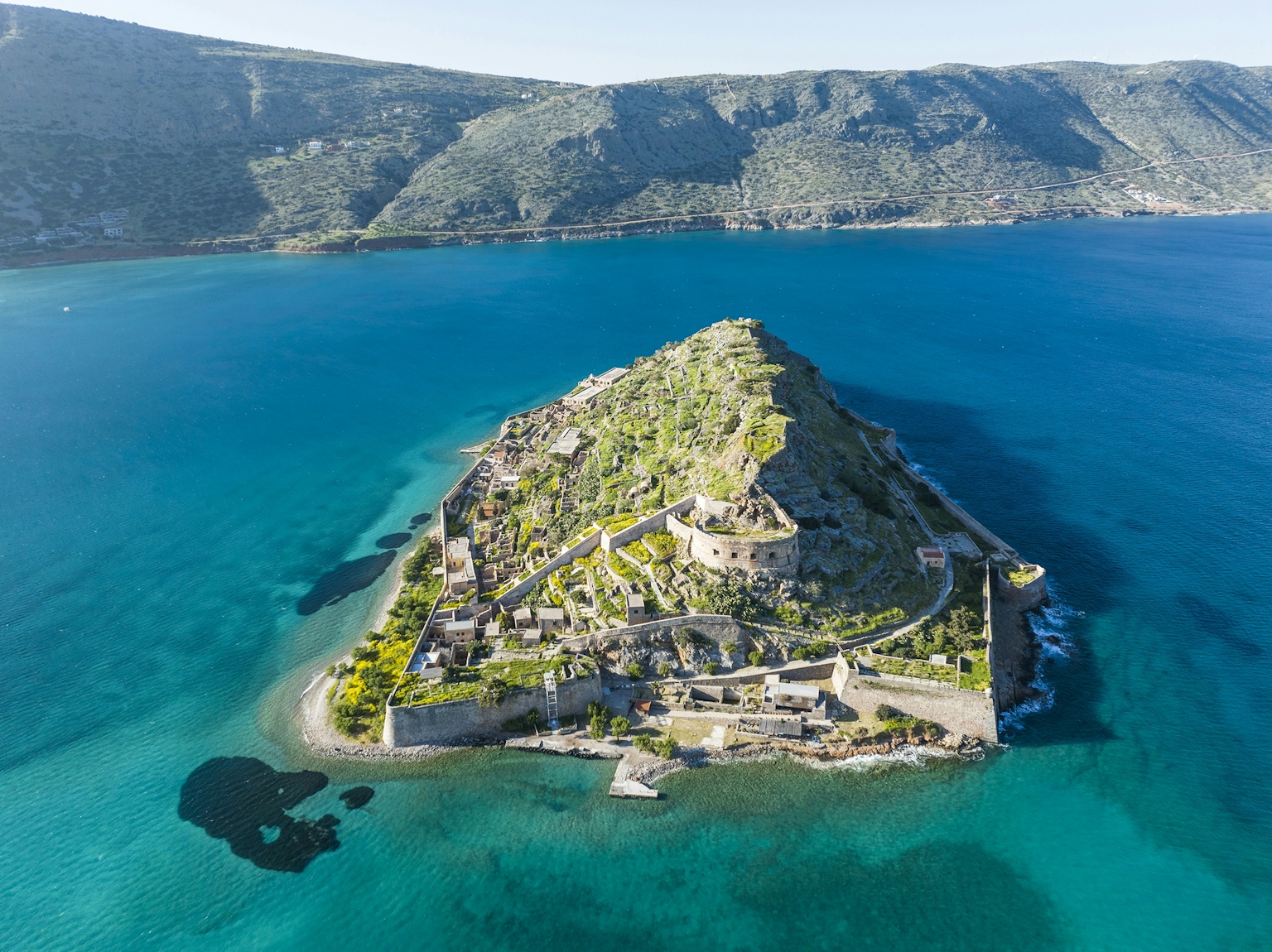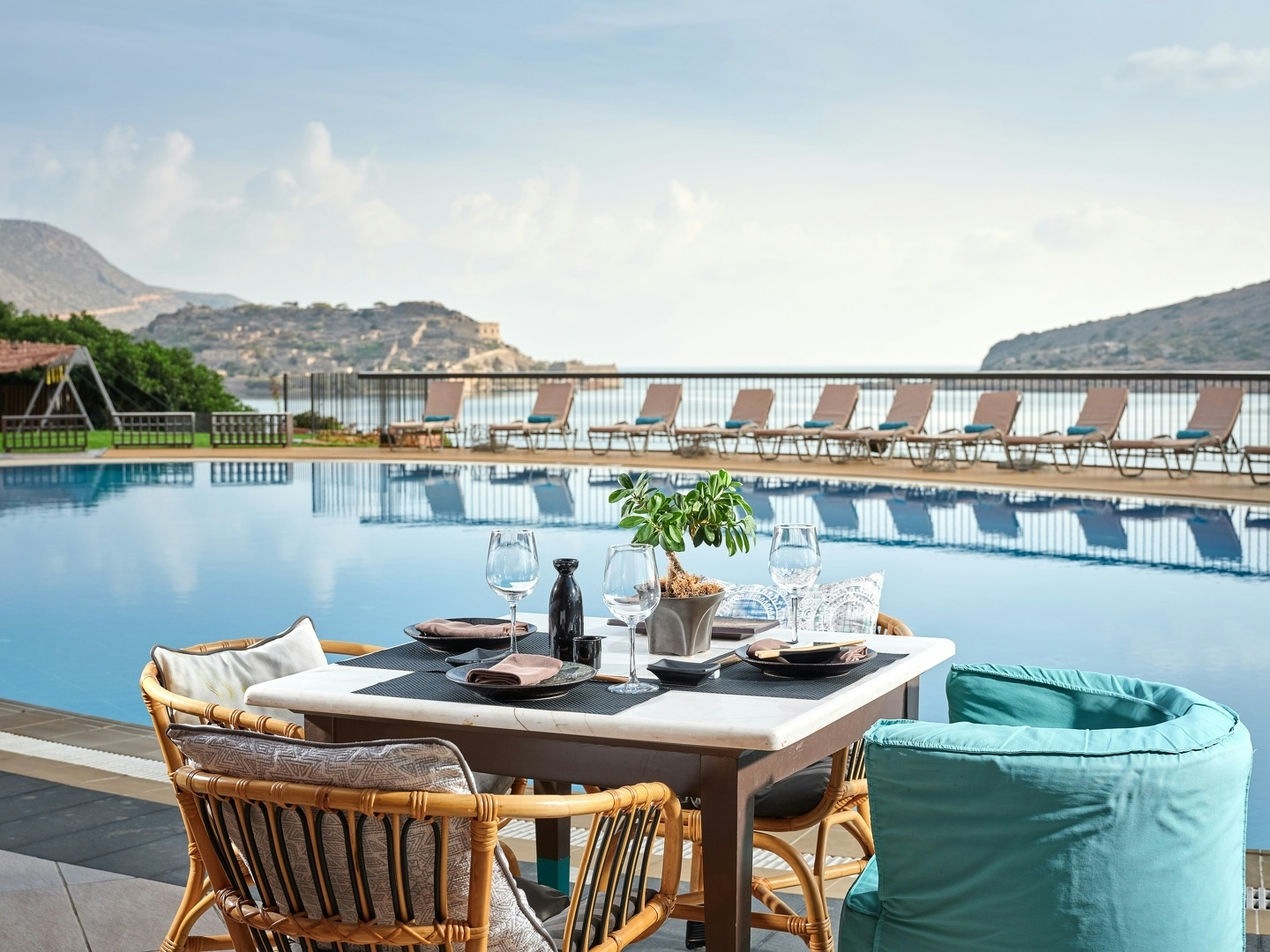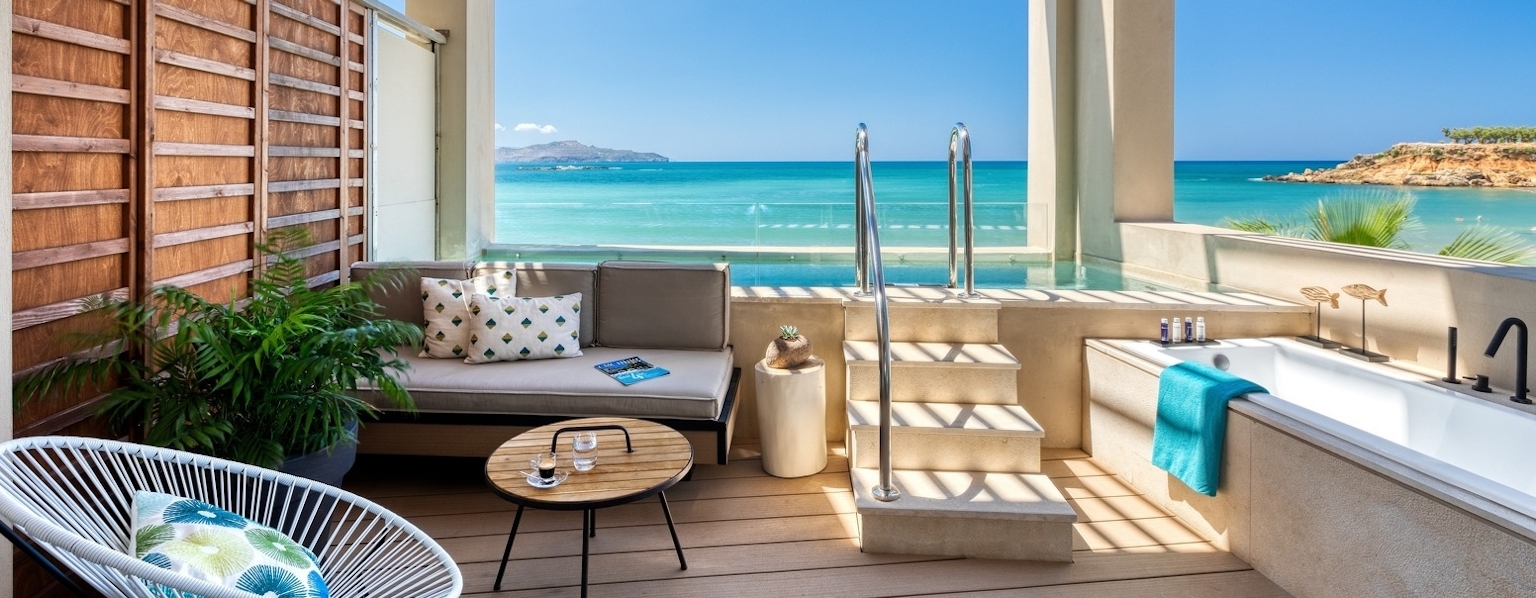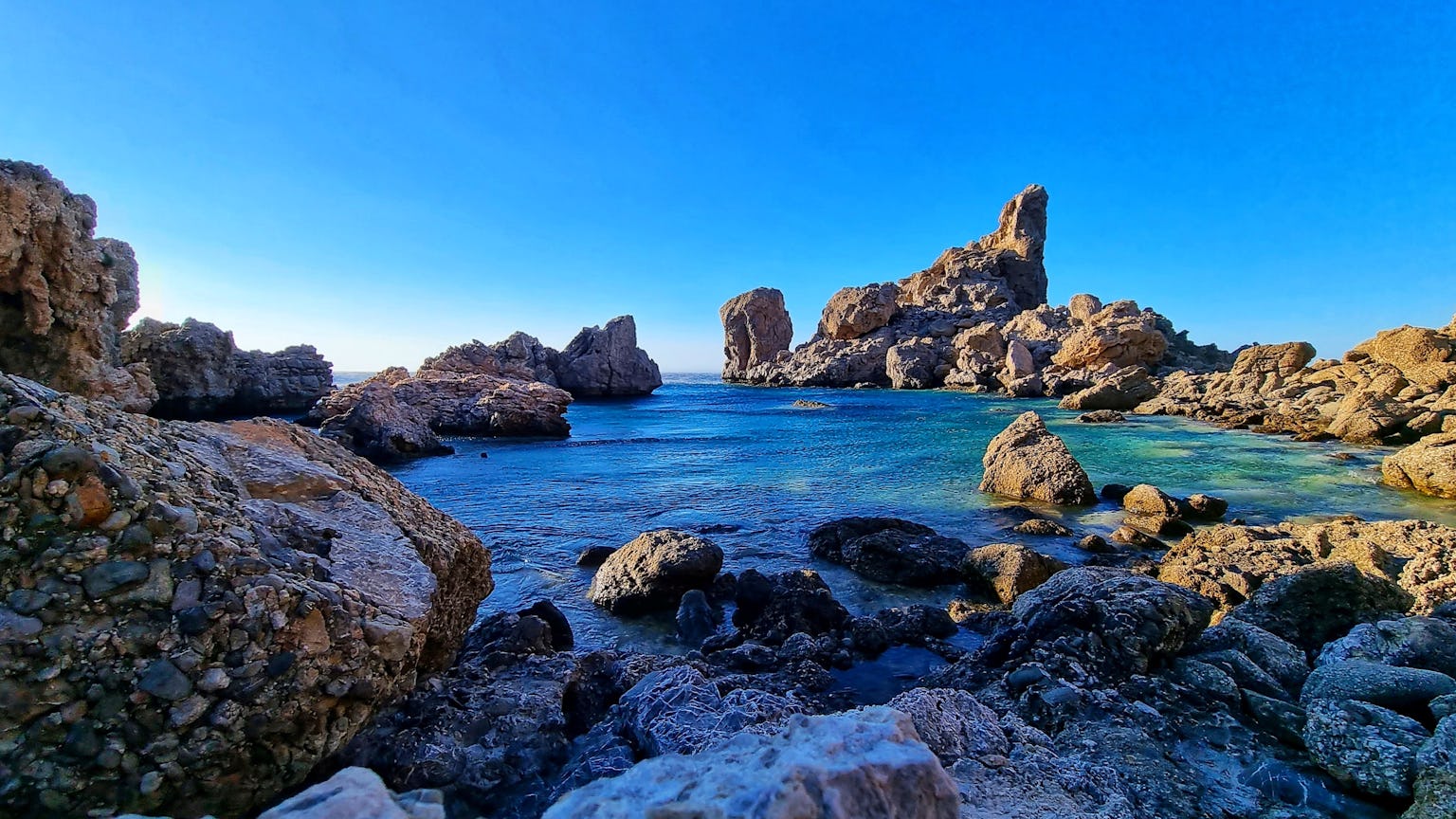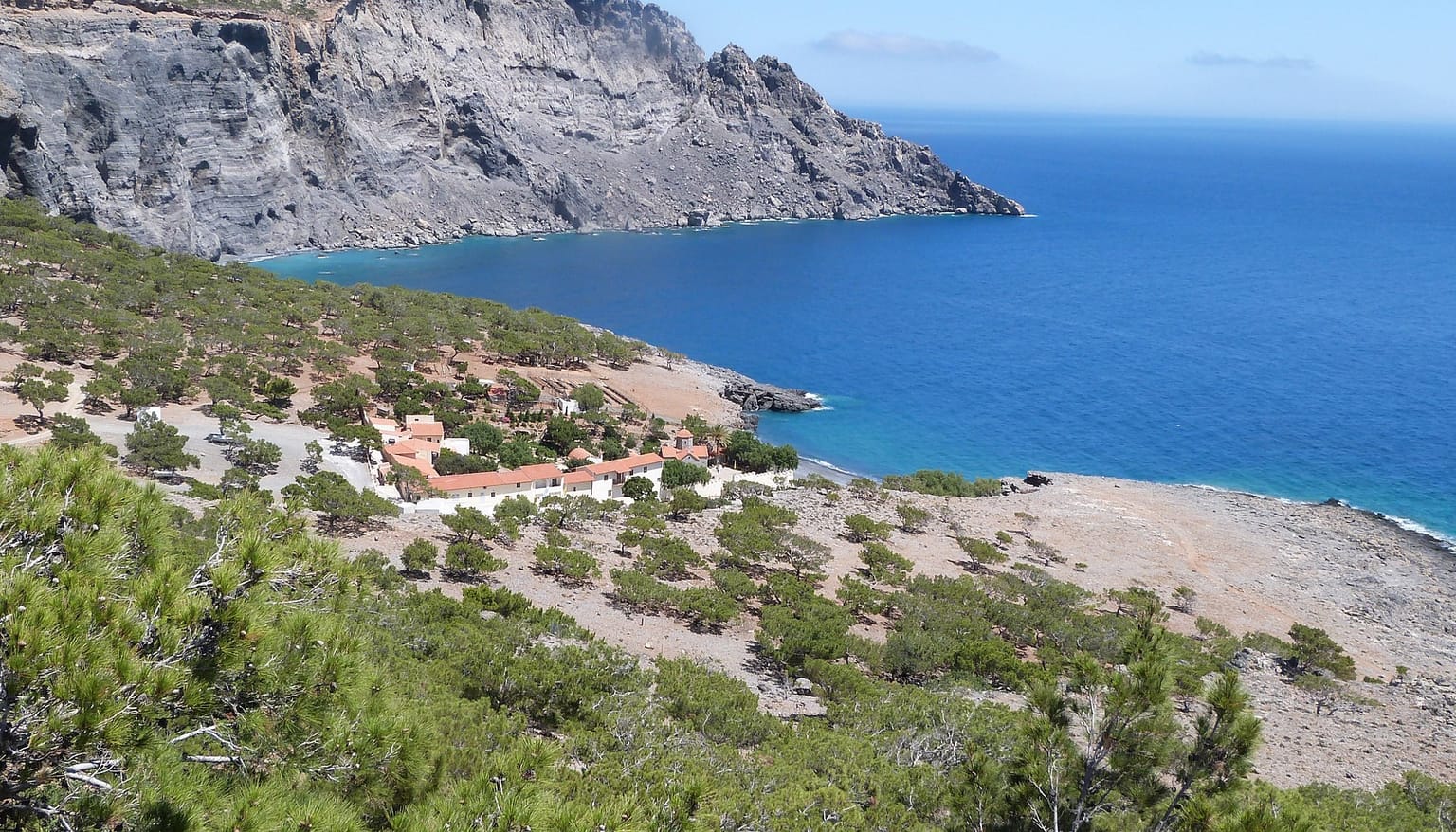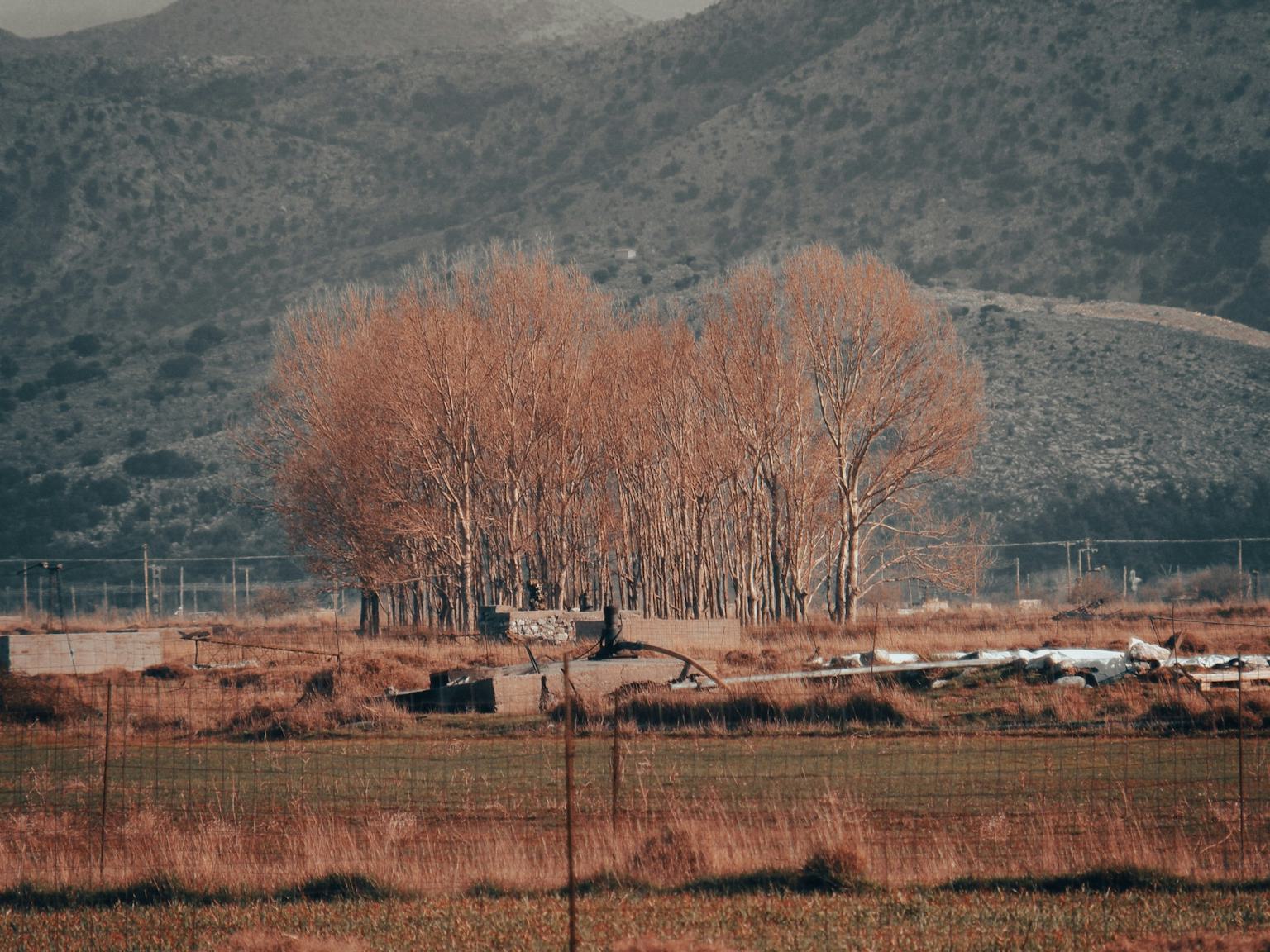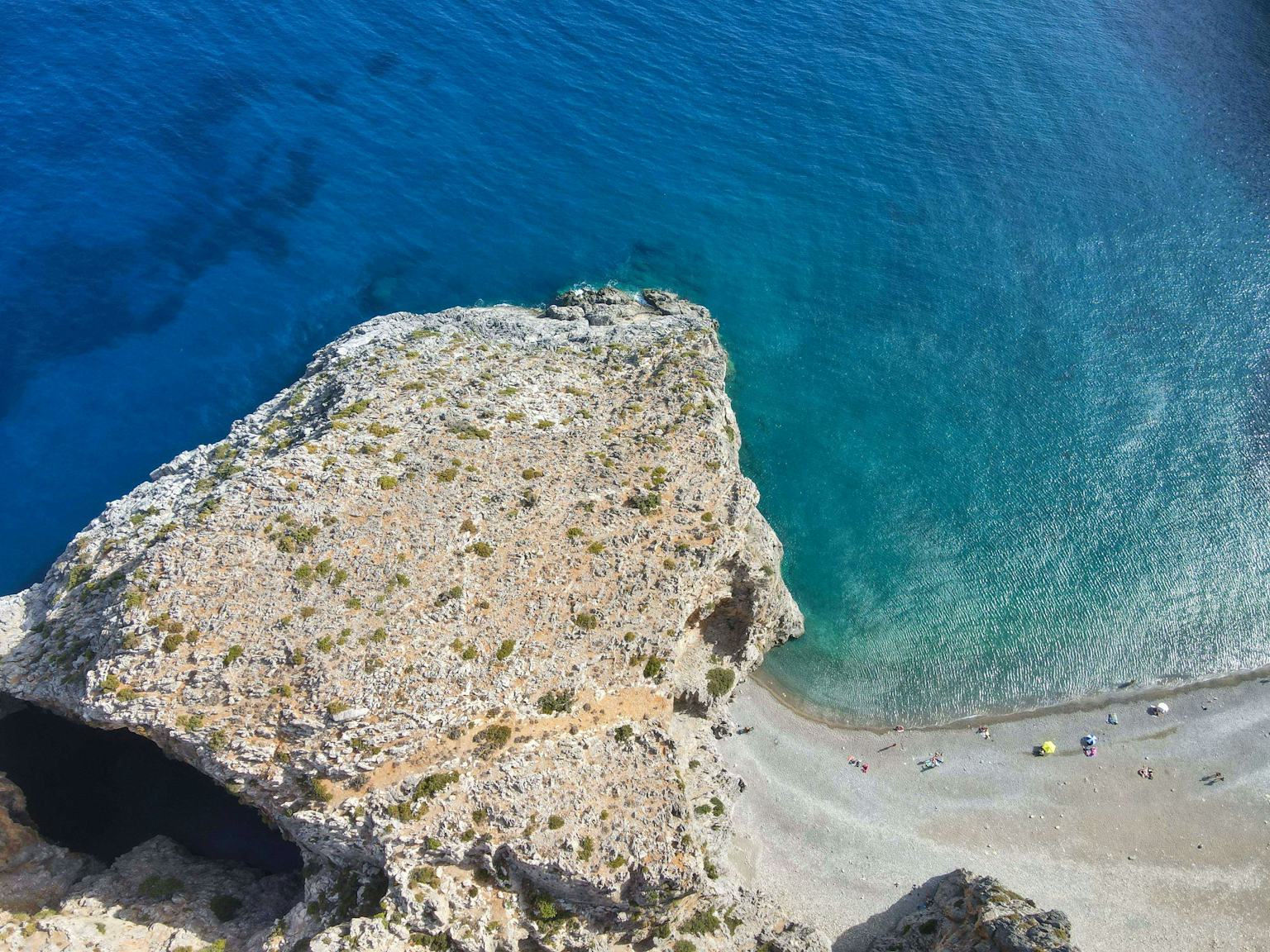Aradena Gorge: Hiking with a View of the Libyan Sea
Nature & Outdoors

things must take with you
DURATION 4,5 hours
GRADE difficult
ABOUT
The Aradena Gorge, also known as Aradaina, is renowned for its wild beauty and is one of the most famous gorges in the Chania prefecture. The trek through the gorge begins at the abandoned village of Aradena, deserted since 1952 due to a vendetta, and concludes at Marmara Beach. While the gorge starts at an altitude of 1,000 metres, higher than Lefka Ori, the current route has been established. Its name is derived from the autonomous city of Araden of the archaic period, situated at Passopetra, adjacent to the subsequent village of Aradena.
Araden was originally founded by the Phoenicians and is linked to the Phoenician word ‘Aruad’, signifying shelter. The route, spanning around 4.5 kilometres, poses some challenges as there are sections that are quite difficult to access. The gorge is adorned with a variety of plants, including mint, oleander, chaste tree, and more. Throughout the Turkish occupation, the gorge witnessed various significant events. In 1867, a major battle occurred between 4,000 rebellious Greeks and 25,000 Turkish soldiers, leading to the retreat of the Greeks and the subsequent burning of the village by the Turks.
In the gorge, there is a metal bridge that links the village of Aradena with the surrounding areas. Standing at a height of approximately 150 metres, this bridge offers an ideal location for bungee jumping.
Photo: wikipedia.
see also

Vritomartis Naturist Resort - Chora Sfakion
Overlooking the serene Libyan Sea and the majestic White Mountains, the environmentally sustainable resort offers a serene and relaxing environment for naturist enthusiasts from around the world. At Vritomartis Naturist Resort, important steps have been taken to minimize the impact on the natural surroundings, ensuring that guests' stays harmoniously coexist with the pristine beauty of Crete.
Since 1992, Vritomartis has proudly operated as the only licensed naturist resort in Crete, strictly adhering to the guidelines set forth by the International Naturist Federation. With a long-standing commitment to naturism, the resort has garnered recognition as one of the best hotels worldwide.
Guests can immerse themselves in the refreshing waters of the 25-meter swimming pool, perfect for a leisurely swim or invigorating aqua gym session. For those seeking a closer connection with nature, the naturist beach, "Filaki," offers a private sanctuary where you can unwind and embrace the freedom of naturism. And for a truly enchanting experience, the naturist boat trips along the stunning coasts of Crete should not be missed.
At Vritomartis Naturist Resort, guests can indulge in a wide range of activities designed to enhance relaxation and enjoyment. Engaging in garden games, pampering oneself with invigorating massages, or dancing the night away during dance nights featuring international and traditional music are just a few options. Book your stay at Vritomartis Naturist Resort and embark on an unforgettable journey of relaxation, rejuvenation, and unbridled freedom.
Guided walking tours to remarkable locations such as Samaria Gorge, Imbros Gorge, Aradena Gorge, and more are also available, delighting nature enthusiasts and offering an opportunity to connect with the island's rich natural heritage while embracing the freedom of naturism.
Find out more information here
Overlooking the serene Libyan Sea and the majestic White Mountains, the environmentally sustainable resort offers a serene and relaxing environment for naturist enthusiasts from around the world. At Vritomartis Naturist Resort, important steps have been taken to minimize the impact on the natural surroundings, ensuring that guests' stays harmoniously coexist with the pristine beauty of Crete.
Since 1992, Vritomartis has proudly operated as the only licensed naturist resort in Crete, strictly adhering to the guidelines set forth by the International Naturist Federation. With a long-standing commitment to naturism, the resort has garnered recognition as one of the best hotels worldwide.
Guests can immerse themselves in the refreshing waters of the 25-meter swimming pool, perfect for a leisurely swim or invigorating aqua gym session. For those seeking a closer connection with nature, the naturist beach, "Filaki," offers a private sanctuary where you can unwind and embrace the freedom of naturism. And for a truly enchanting experience, the naturist boat trips along the stunning coasts of Crete should not be missed.
At Vritomartis Naturist Resort, guests can indulge in a wide range of activities designed to enhance relaxation and enjoyment. Engaging in garden games, pampering oneself with invigorating massages, or dancing the night away during dance nights featuring international and traditional music are just a few options. Book your stay at Vritomartis Naturist Resort and embark on an unforgettable journey of relaxation, rejuvenation, and unbridled freedom.
Guided walking tours to remarkable locations such as Samaria Gorge, Imbros Gorge, Aradena Gorge, and more are also available, delighting nature enthusiasts and offering an opportunity to connect with the island's rich natural heritage while embracing the freedom of naturism.
Find out more information here

The Authentic Village Boutique Hotel - Chora Sfakion
The Authentic Village Boutique Hotel is located in Chora Sfakion, just 100 meters from Vrissi Beach and less than 1 kilometer from Ilingas Beach. The hotel embraces an adults-only philosophy centered around the utmost comfort and satisfaction of its guests.
From every angle, the influence of Cretan culture, heritage, and architecture is evident, providing a holistic view of the Cretan lifestyle. Constructed with local grey stone and wood, the materials contribute to a sense of warmth, tranquility, and romance. The entire building harmoniously blends with the surrounding physical environment, preserving the captivating landscape and the local essence.
Living like a local and taking advantage of contemporary conveniences possible here. The Authentic Village is a true embodiment of Cretan tradition, offering unforgettable and personalized experiences.
Take local guided tours with a private guide to incredible destinations. Hike the second most famous gorge in Chania, Imbros gorge, with our local mountain-guide. Explore nature and learn about the Cretan flora & fauna. A stunning gorge with amazing cliff and some 'sporty' parts, Aradena, is the deepest and steepest gorge in Chania. Our local mountain-guide will definitely be a great highlight on this trip, helping you to cross over the gorge, safely.
Find out more information here
The Authentic Village Boutique Hotel is located in Chora Sfakion, just 100 meters from Vrissi Beach and less than 1 kilometer from Ilingas Beach. The hotel embraces an adults-only philosophy centered around the utmost comfort and satisfaction of its guests.
From every angle, the influence of Cretan culture, heritage, and architecture is evident, providing a holistic view of the Cretan lifestyle. Constructed with local grey stone and wood, the materials contribute to a sense of warmth, tranquility, and romance. The entire building harmoniously blends with the surrounding physical environment, preserving the captivating landscape and the local essence.
Living like a local and taking advantage of contemporary conveniences possible here. The Authentic Village is a true embodiment of Cretan tradition, offering unforgettable and personalized experiences.
Take local guided tours with a private guide to incredible destinations. Hike the second most famous gorge in Chania, Imbros gorge, with our local mountain-guide. Explore nature and learn about the Cretan flora & fauna. A stunning gorge with amazing cliff and some 'sporty' parts, Aradena, is the deepest and steepest gorge in Chania. Our local mountain-guide will definitely be a great highlight on this trip, helping you to cross over the gorge, safely.
Find out more information here

The gorge of Elygia
It is one of the most remarkable gorges of Sfakia, where a few couples of wild goats still live (the seldom Cretan Chamois).
Its passage starts from the village of Agios Ioannis in Sfakia (at an altitude of 780 m and a distance of 92 km from Chania). You need around 1 hour in order to reach the location of Kormokopos, where there are caves with water, before starting descending the gorge (up to that point, you need a guide).
The gorge ends in the very beautiful piny sand beach of the Libyan Sea, after another 2 hours’ walk. From the beach to Agia Roumeli, you have to walk one more hour. The above crossing covers half the gorge. If you wish to cross all of Elygia, you need an experienced guide and at least 2 days at your disposal. You start from the plateau of Omalos and walk via the refuge of Kallergi and the summit of Melintaou (at an altitude of 2133 m) before reaching the location “Potamos” in the White Mountains.
After a vertical descent of 10 m, you reach the bottom of the gorge and walk on up to the coast of the Libyan Sea. The Omalos – Potami trek takes 6 hours and another 6 hours from there to the coast.
Source Region of Crete
It is one of the most remarkable gorges of Sfakia, where a few couples of wild goats still live (the seldom Cretan Chamois).
Its passage starts from the village of Agios Ioannis in Sfakia (at an altitude of 780 m and a distance of 92 km from Chania). You need around 1 hour in order to reach the location of Kormokopos, where there are caves with water, before starting descending the gorge (up to that point, you need a guide).
The gorge ends in the very beautiful piny sand beach of the Libyan Sea, after another 2 hours’ walk. From the beach to Agia Roumeli, you have to walk one more hour. The above crossing covers half the gorge. If you wish to cross all of Elygia, you need an experienced guide and at least 2 days at your disposal. You start from the plateau of Omalos and walk via the refuge of Kallergi and the summit of Melintaou (at an altitude of 2133 m) before reaching the location “Potamos” in the White Mountains.
After a vertical descent of 10 m, you reach the bottom of the gorge and walk on up to the coast of the Libyan Sea. The Omalos – Potami trek takes 6 hours and another 6 hours from there to the coast.
Source Region of Crete

The gorge of Asfendou
The gorge has its entrance in the almost deserted mountain village of Sfakia called Asfendou (at an altitude of 770 m and a distance of 8 km from Imbros).
You reach the gorge by coming from the area of Ambelos – Tentas – Seli and after walking for 3 hours, you meet the old village of Agios Georgios (former Kolokasia) situated at an altitude of 260 m. The 1700-m long rural road will lead you from there to the main road of Chora Sfakion – Fragokastello and to the new village of Agios Nektarios, 73 km from Chania and 7 km from Chora Sfakion.
Source Region of Crete
The gorge has its entrance in the almost deserted mountain village of Sfakia called Asfendou (at an altitude of 770 m and a distance of 8 km from Imbros).
You reach the gorge by coming from the area of Ambelos – Tentas – Seli and after walking for 3 hours, you meet the old village of Agios Georgios (former Kolokasia) situated at an altitude of 260 m. The 1700-m long rural road will lead you from there to the main road of Chora Sfakion – Fragokastello and to the new village of Agios Nektarios, 73 km from Chania and 7 km from Chora Sfakion.
Source Region of Crete
Search
for
— things to do or a local business
Search
for
— things to do or a local business
Trends
